2025 Author: Erin Ralphs | [email protected]. Last modified: 2025-01-22 21:14:16
"Moskvich-2140" (M-2140) is a typical rear-wheel drive sedan of the fourth generation from the "one and a half thousand" family. It was produced at AZLK (Moscow) for 13 years, until 1988. Immediately after the end of the Moscow Summer Olympic Games in August 1980, the number of such cars exceeded three million, and two years before the production of this model was discontinued, the next Moskvich-1500 SL set a new record and became four million. Alas, before the production of this model was discontinued, it was not possible to produce another million M-2140 vehicles.

Being a deep reworking of the previous Moskvich family with the index 412, it won the hearts of many motorists so much that they continue to buy it even in the 21st century and by no means for collection or selfish purposes. They are restored, and spare parts are ordered not only from Russia, but also from abroad, and they drive, however, carefully and not in winter. So, the German who acquired the Moskvich of this modification,being a citizen of the GDR (now very few people remember this Soviet foreign country of ours), over 40 years of operation, he drove more than a million kilometers on it and does not agree to change it to a modern car in any way.
History of Creation
In the early 80s of the last century, the manufacturer of the Moskvich car (hereinafter referred to as AZLK) was going through hard times. The Moskvich-412 family of cars had exhausted its modernization resource, and a conceptually new model was required. Such promising models, developed as something between AZLK and GAZ products, such as Series 3-5 and Series C (Crocodile Gena) did not go into production.
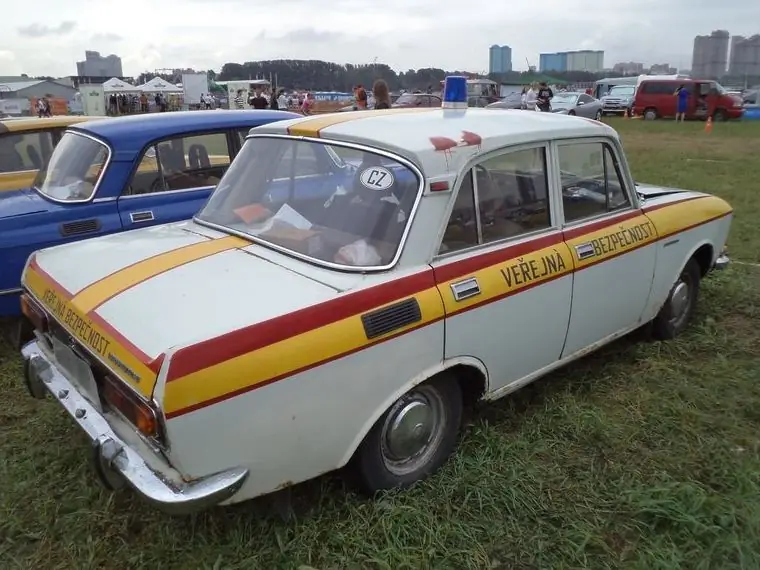
Deep improvement of previous cars
It was not possible to create a fundamentally new car, and they decided to modernize the 408 and 412 series in every possible way. Three companies worked on these projects in parallel:
- AZLK directly.
- German firm Porsche Design.
- Paris branch of the American Lawley.
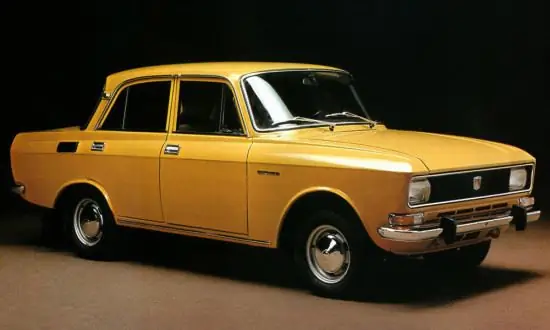
As a result, foreign projects were rejected, and the successor to the traditions embodied in the Moskvich-408 car was Moskvich-2138, and M-412 - 2140, respectively, Moskvich-2140. Restyling work began in 1975. It was carried out quickly, and a year later the car went into serial production. These two models differed only in exterior design and engine.
Export version
The reaction of AZLK specialists to the message about the project ordered in the USA is curiousmodifications of the 1500 family to increase overseas sales, 80 thousand US dollars were paid. “If we had been given this amount in rubles, we would have done better,” said Soviet engineers. In the end, it did. The American version was “hacked to death”, and our specialists developed the Lux SL modification free of charge (for only one salary and the current bonus). This modification was produced by AZLK in cooperation with the Yugoslavs (firm Saturnus), paying for the parts received by barter: by the cars themselves.
Production of the export version of the M-2140 with the index 2140SL (1500SL, 2140-117) was started in 1981. This car boasted a new instrument panel, plastic bumpers with chrome lining and moldings, as well as a metallic color, which was then a rarity. Domestically assembled cars were mainly bought in the countries of the socialist community, while screwdriver assembly cars were bought up in capitalist countries.
Assembly outside the USSR
Moskvich cars in the "screwdriver assembly" mode, including the M-2140, were assembled in Bulgaria and Belgium. At the same time, production volumes were rather big: more than two tens of thousands of cars a year. At the same time, if in Bulgaria, which was a socialist country, our technological process was observed almost completely, then Belgium, as a capitalist country, made significant changes to this work. So, the firm Scaldia-Volga S. A. could supply an English or French engine, as well as change the interior and design. As a result, Moskvich was sold in four trim levels: Normal, L. S., Elita andRally. The Finnish dealer of AZLK, Konela (rear-view mirrors, high-pressure headlight washers), also sinned with a small pre-sale processing.
Modifications
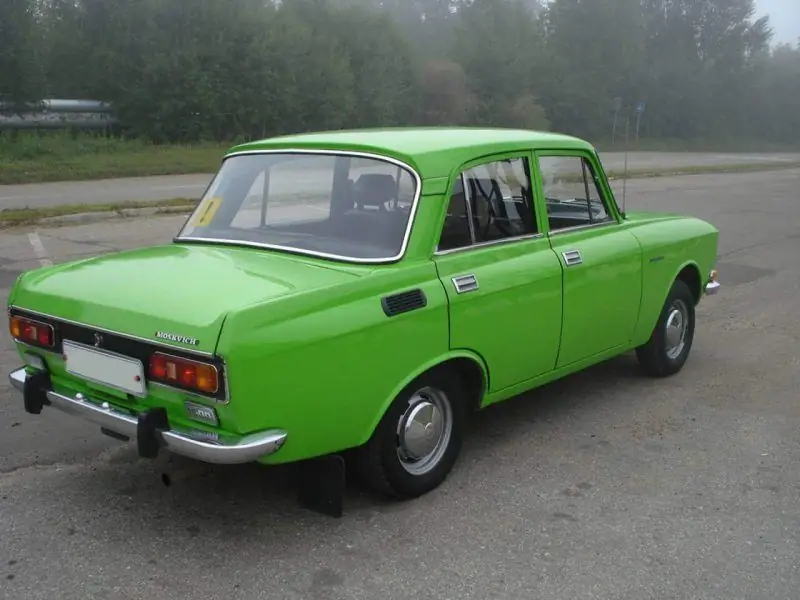
M-2140 had many modifications. We list some of them below:
- "Moskvich-2140D". A conventional body with a weakened engine, designed for the type of fuel A-76, which was common and cheap at that time.
- "Moskvich-214006 (214007)". Option for sale abroad.
- "Moskvich-2140-117" or 2140SL. Luxury version for overseas sales (model produced for 6 years).
- "Moskvich-2140-121". Special taxi version with seats covered with leather substitute (produced for 6 years).
- "Moskvich-21403" - "disabled" with RU (produced 9 years).
- "Moskvich-21406". Rustic version with improved cross-country ability and a weakened engine, special brakes, reinforced suspension, reliable towing device (manufactured 10 years).
- "Moskvich-21401" - a medical sedan (for servicing patients at home). To facilitate the disinfection of the interior, it was upholstered with materials of artificial origin as much as possible.
- "Moskvich-214026" (214027). This is an export version for English-speaking countries with left-hand traffic (the steering wheel is on the right). There were two options: for normal and subtropical (tropical) climates.
- Moskvich-2315. This is a sedan with an open and closed body (the model was assembled over 5 years in small batches from rejected cars).
- "Moskvich-2137" -station wagon of the “one and a half thousand” family (hadn’t rolled off the assembly line for 10 years).
- Moskvich-2734 is a cargo van for transporting small consignments of cargo (this modification was produced for 6 years).
- "Moskvich-1600 Rallye" (AZLK 1600 SL Rallye) - sports versions of the M-2140, designed to participate in various rallies. They differ in homologation dates - 1976 and 1983, respectively. They had forced engines and fundamentally different gearboxes from the M-2140 gearbox, as well as brakes.
Description of construction
Due to the modernized body and lighting equipment, which met the requirements of the second half of the last century, the Moskvich-2140 car began to fully comply with the traffic safety standards existing at that time.
Also, in order not to violate relevant international requirements, which was critical when selling this car abroad, it was equipped with the latest front disc brakes, a safety steering wheel and a soft dashboard. Headrests were installed on the seats. In the event of a head-on collision, they softened the impact of the head when the body returned by inertia back. An emergency alarm appeared (even earlier than on the Zhiguli), and outdoor lighting and brake lights automatically reduced their brightness at night.
Additional changes M-2140
Introduced in 1982, additional changes mainly affected its appearance. Gone are the air vents, wheel caps, chrome grille surround and black stripe between the taillights. A “luxury” steering wheel and interior heater were installed,changes have been made to the design of the bumpers. The existing designations were replaced with "Moskvich" and "AZLK".
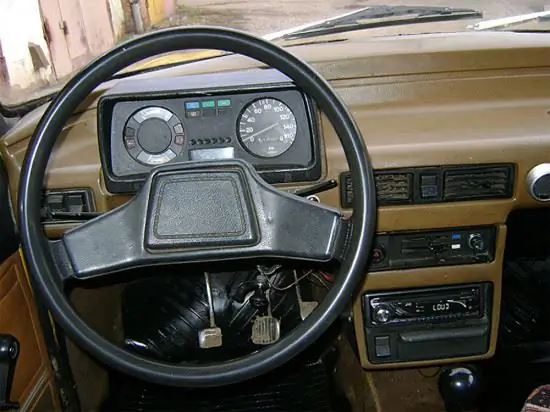
A large number of these vehicles were equipped with steel cord tires, and some even had a rear window defroster.
The main characteristic of the M-2140 is the weight of the cargo being transported. By itself, this car model weighed just over one ton and could carry a maximum load of up to 400 kilograms. The car could contain a driver and four passengers, a spare wheel and the contents of the trunk inside the car, as well as a roof rack with a load of up to 0.5 centners. At the same time, it was necessary to pump up the rear wheels to the appropriate atmospheres and observe the speed limit no higher than its average.
What does the M-2140 look like? Photos can be seen in the article. These cars are rarely seen on the streets these days.
M-2140: Specifications
The basic model of the Moskvich-2140 car had the following parameters:
- Doors (pieces) - four.
- Passengers (persons) - four.
- Size in length - 425 centimeters.
- The size is 155 centimeters wide.
- Height size (without additional load) - 148 centimeters.
- The distance between the axles is 240 centimeters.
- The gauge is 127 centimeters.
- Clearance - 17 centimeters.
- Engine M-2140 - four-cylinder, gasoline, carburetor type, four-stroke.
- Net volume of the engine is 1.48 cubic decimeters.
- N engine (power) - seventy-fiveHorse power. Acceleration to a hundred kilometers in twenty seconds.
- Gearbox - gear (four steps - four gears forward and one reverse).
- Dampers (shock absorbers) - liquid (hydraulic), telescopic.
- Braking system - discs in front and drums in the back.
- Gasoline consumption is about nine liters per hundred kilometers.
- Speed (maximum) - 142 kilometers per hour.
- Net weight is one ton.
- Full weight without additional load - 1080 kilograms.
- Full weight with maximum additional load - up to one and a half tons.
Participation in sports competitions
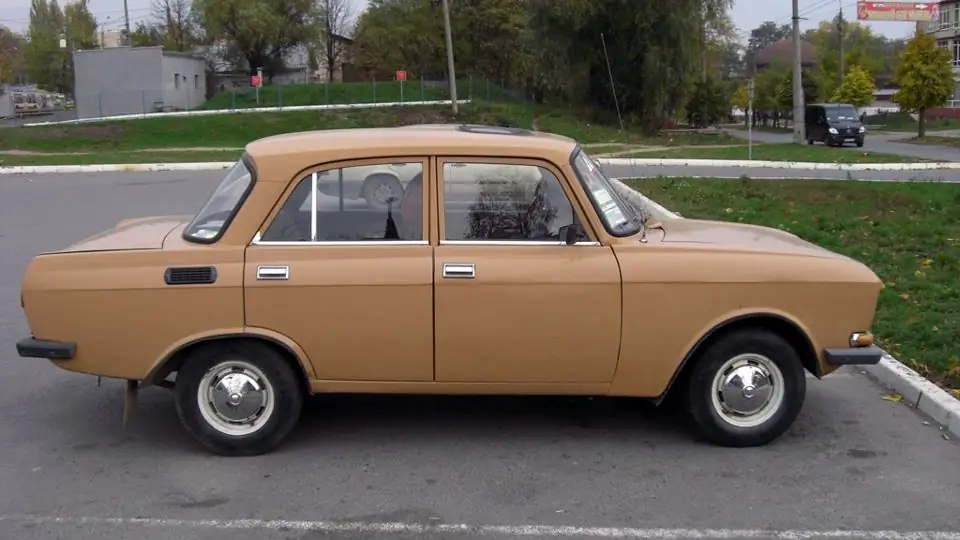
"Moskvich-2140" could not overtake its predecessor in "glory" in sports races, although it had separate victories at the stages of the Friendship Cup of socialist countries, Saturnus (Yugoslavia) and even thousands of lakes (Finland). True, almost only one body remained from the M-2140 in rally cars, since everything else was at least modernized, and most of the parts were simply replaced with those that could support the participation of the car in these competitions. Although it was initially clear that he could not rise to the podium. It was a race for "its own tail" or for the "phantom" of the last rear-wheel drive "Moskvich" in the history of AZLK.
Price
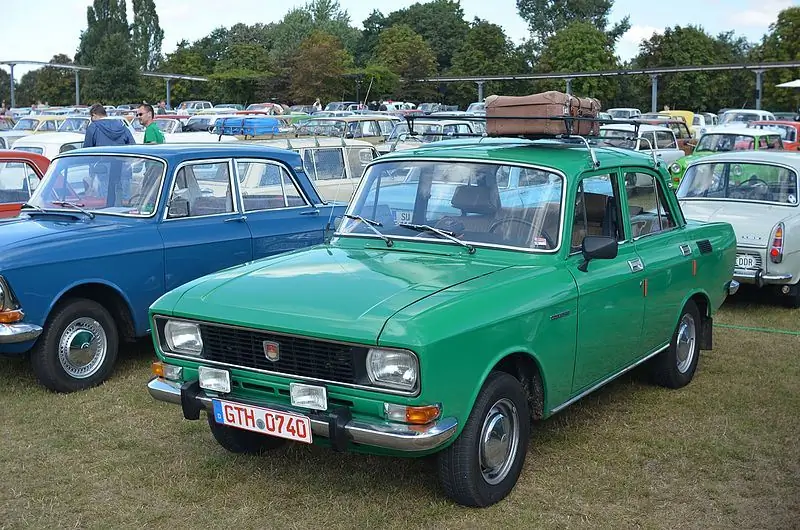
At the moment, this car can be purchased on the secondary market at a price of 15 to 30 thousand rubles on average. There are also almost perfect specimens,sold for 150 thousand rubles. But you need to understand that most models are in poor condition. First of all, "Muscovites" require welding. After the purchase, you have to digest the bottom, sills and arches.
Conclusion
AZLK lost the fight with AvtoVAZ, including in terms of price/quality ratio. Demand for the M-2140 fell to a record low. So, in 1984, nine out of ten issued "Moskvich" were not bought, there was a packing. His rating fell so low that he was only slightly able to overtake the “humpbacked” car of the Zaporozhets brand. And in the summer of 1988, the last Moskvich-2140 rolled off the AZLK factory assembly line.
Recommended:
GAZ-11: photo and review of the car, history of creation, specifications and interesting facts
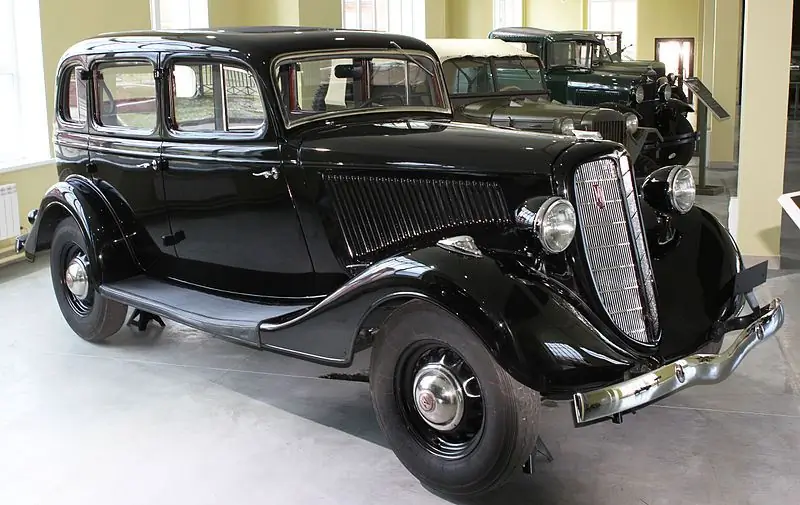
GAZ is the largest automaker that started manufacturing products in the city of Nizhny Novgorod. In the first years of its work, GAZ produced "Ford" products. For the realities of the Russian climate, the engine of this series of cars did not fit well. Our specialists solved the task, as always, quickly and without unnecessary troubles, taking as a basis (actually copying) the new GAZ-11 engine, the American lower-valve Dodge-D5
ZIL-pickup: description with photo, specifications, history of creation
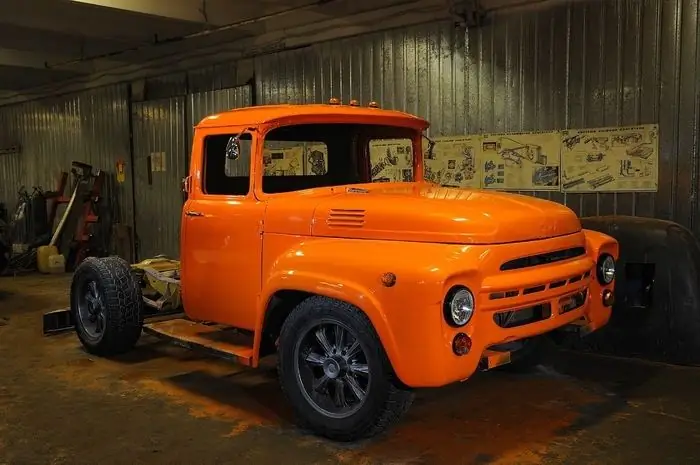
ZIL-pickup car: history of creation, interesting facts, characteristics, features, modifications, photos. Pickup truck based on ZIL: description, restoration, tuning. Converting ZIL-130 into a pickup truck: recommendations, details, how to do it yourself
Wheel tractor MAZ-538: description, specifications, purpose and history of creation

Wheel tractor MAZ-538: description, history of creation, design features, photo. MAZ-538: technical characteristics, purpose, device, type of suspension, engine and gearbox
LiAZ 677 bus: specifications, history of creation and description

At present, few people remember the LiAZ 677 bus, but it is enough to say “livestock truck” or “moon rover”, as people begin to understand and remember. Someone will remember this bus with a slight ironic smile, someone will smile more contemptuously. But in most cases, these popular names and these buses are happy as children. And it's very easy to explain
Toyota Camry lineup: the history of the creation of the car, technical characteristics, years of production, equipment, description with photo
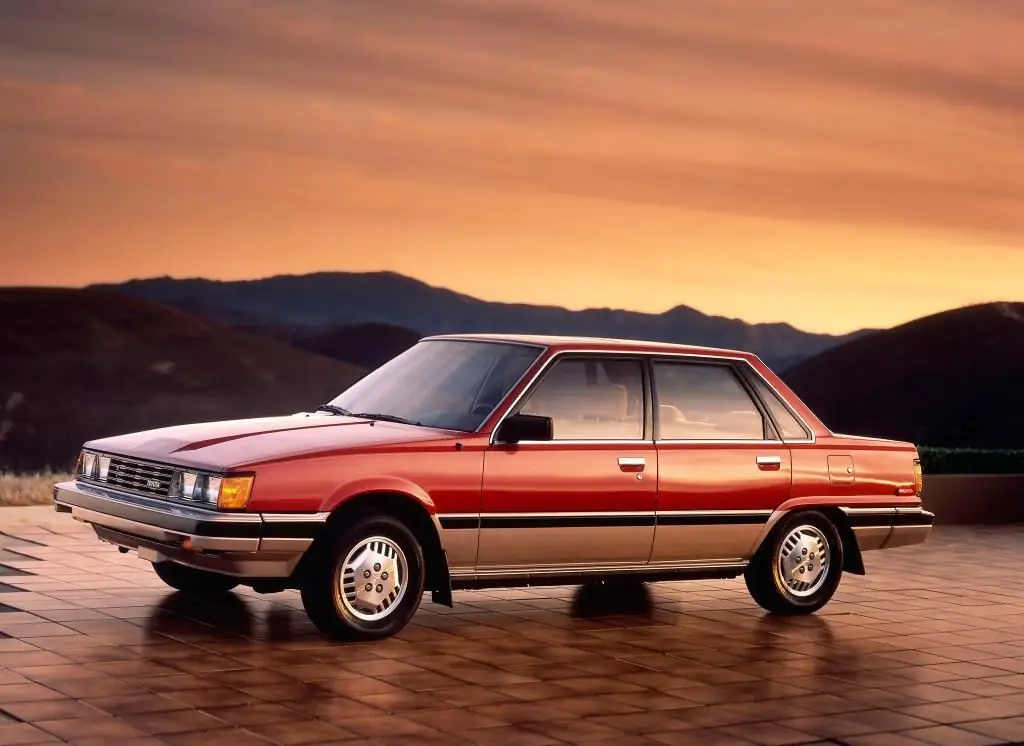
Toyota Camry is one of the best cars made in Japan. This front-wheel drive car is equipped with five seats and belongs to the E-class sedan. The Toyota Camry lineup dates back to 1982. In the US in 2003, this car took the first position in sales leadership. Thanks to its development, already in 2018, Toyota released the ninth generation of cars in this series. Model "Camry" is classified by year of manufacture

